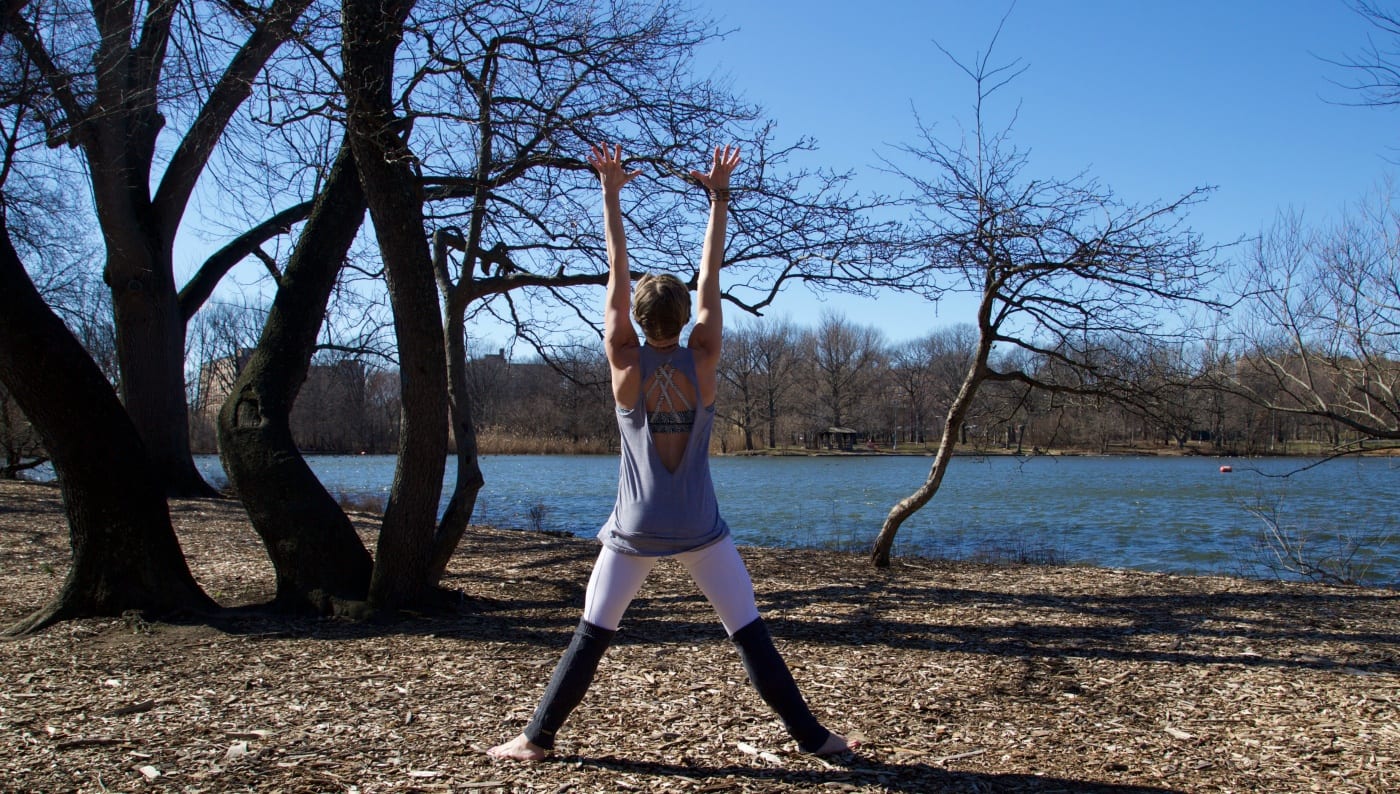
Wherever you are at right now, in this very moment; however it is you are thinking and whatever it is you are feeling, it is always fluctuating. It will become different; it will transmute into something new.
Spring is an opportunity for renewal and rebirth—for planting seeds to nurture, and to witness the unending cycle of grow and change. It is also a reminder that we cannot be born again until we experience a sort of death—a shedding of old layers, habits, and outmoded beliefs. When we recognize that each waking moment is an opportunity to be born again, it is here, in the now, that we can experience the sheer joy of present moment awareness.
In the Northern Hemisphere on March 20, the Vernal Equinox has been honored for thousands of years as a celebration of life and fertility; a time for striking a balance between yin and yang—and as a „spring cleaning“ of stagnant energy that has been stored over the long, dark and cold winter months.
This yoga sequence is designed to facilitate that awakening; to gather and draw energy inward, and then release it outwardly as a metaphorical planting of seeds.
Dynamic Chair Pose (Shakti Uttanasana)
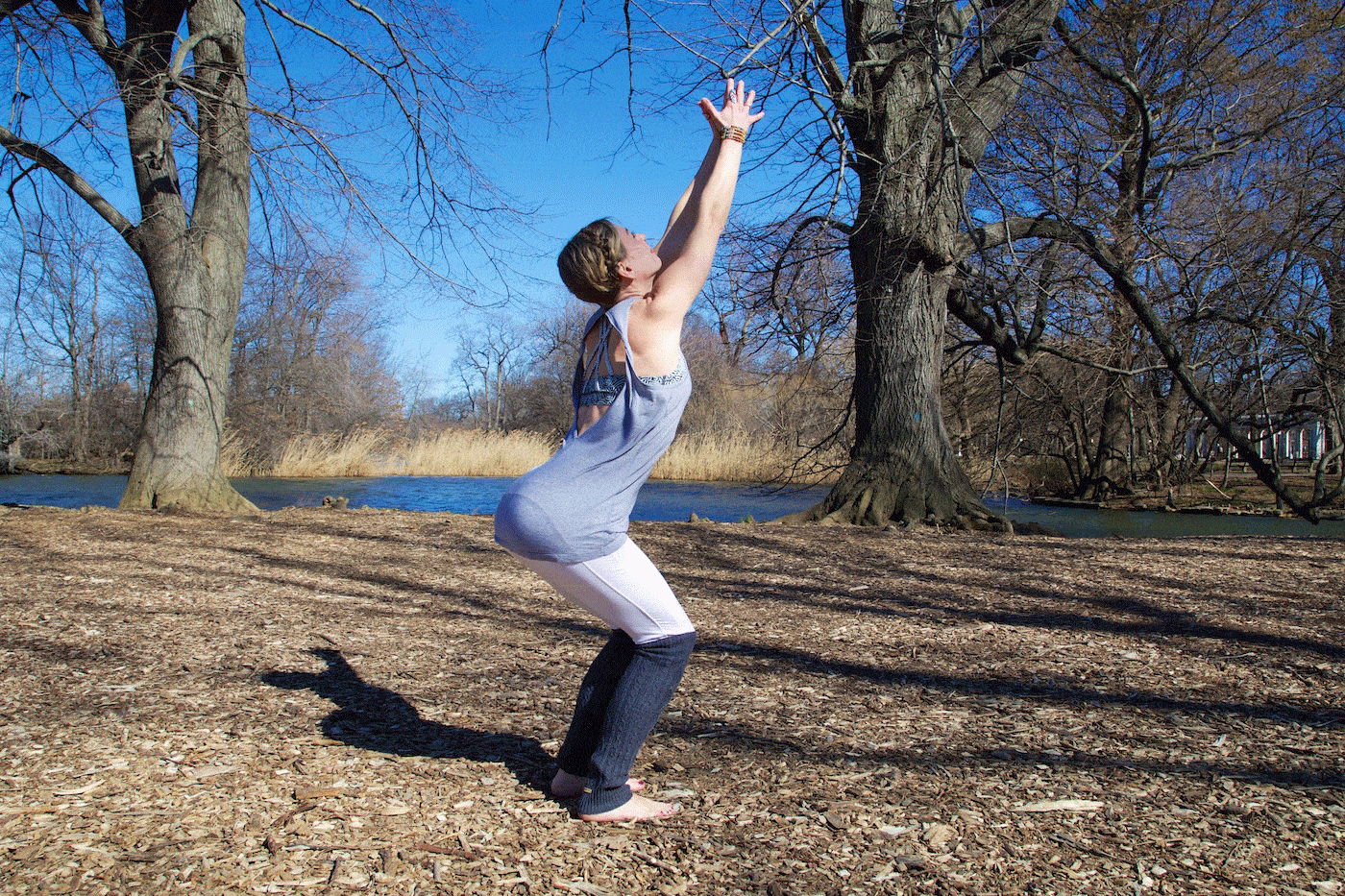
In Hindu mythology, Shakti is described as primordial cosmic energy, representing dynamic forces that move throughout the universe. In this variation on a traditional Chair Pose, attention is directed toward the cosmos, and then to the future and past, empowering us in the present.
From Mountain Pose (Tadasana), inhale the arms overhead to press the palms together, then exhale to shift weight into the heels and sit back into a chair position. Explore the sensation of the tailbone extending back, while the palms and gaze reach skyward, experiencing these powerful opposing forces. On an inhale, lower the palms to shoulder height, gazing at the tips of the thumbs. Breathe in, then exhale to extend the right hand all the way back. Keep the hips square and gaze over the right shoulder, looking to the past. Take a deep breath in, and then exhale to bring the right hand back to meet the left. Inhale to return both palms pressed to the sky.
Cactus Crescent Lunge
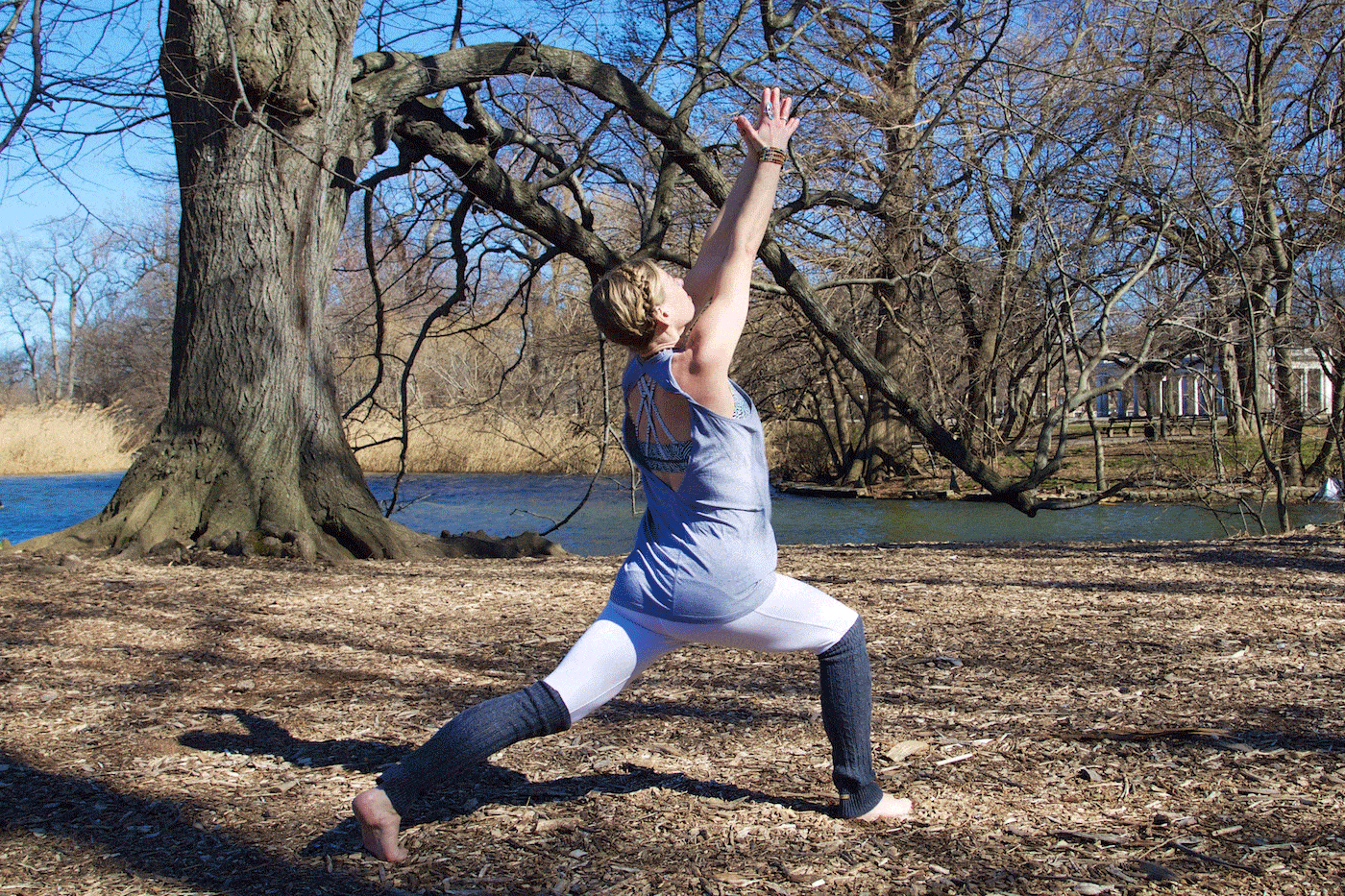
From Chair Pose with the palms pressed together overhead, step the left foot back to a high lunge position and keep the back heel lifted. The right knee stays stacked over the right ankle, with the kneecap tracking forward. Following the same dynamic movements as before, lower the palms at shoulder height, then extend the right palm all the way back, before bringing it forward to meet the left again. Don’t be shy about making a great big clapping sound, either. From here, open the heart and chest by drawing the arms into a cactus position, bending the elbows to about 90 degrees and drawing the shoulder blades together on the back body, letting out a big exhalation. Inhale to return the pressed palms together overhead.
Kali Goddess Squats (Utkata Konasana)
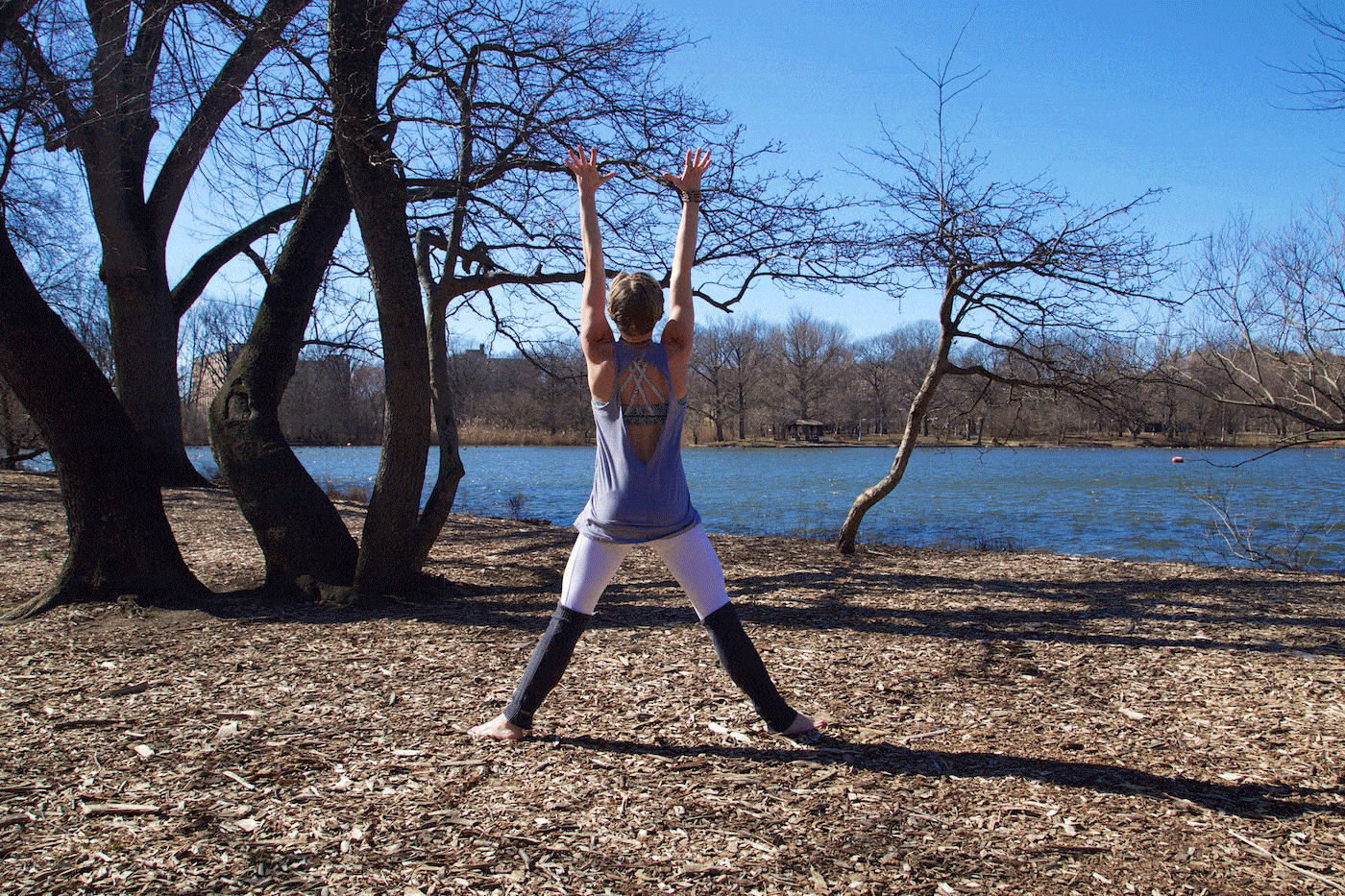
Kali is the Hindu goddess of death, often associated with sexuality and fertility. She is also considered a matriarchal figure. We can work with Kali’s energy at the Equinox to honor the infinite cycles of life and death, embodying the nature of duality. With the palms pressed overhead and legs in a crescent lunge position, inhale to straighten the front leg and turn all ten toes to the left to parallel the feet. From a wide stance and with the heels just slightly turned in, exhale to sink into a Goddess Squat, drawing the thighs parallel to the earth and knees bent at 90 degrees. Inhale to straighten both legs, and exhale to squat. Repeat up to four times.
Wide-Legged Forward Bend (Prasarita Padottanasana) to Scandasana
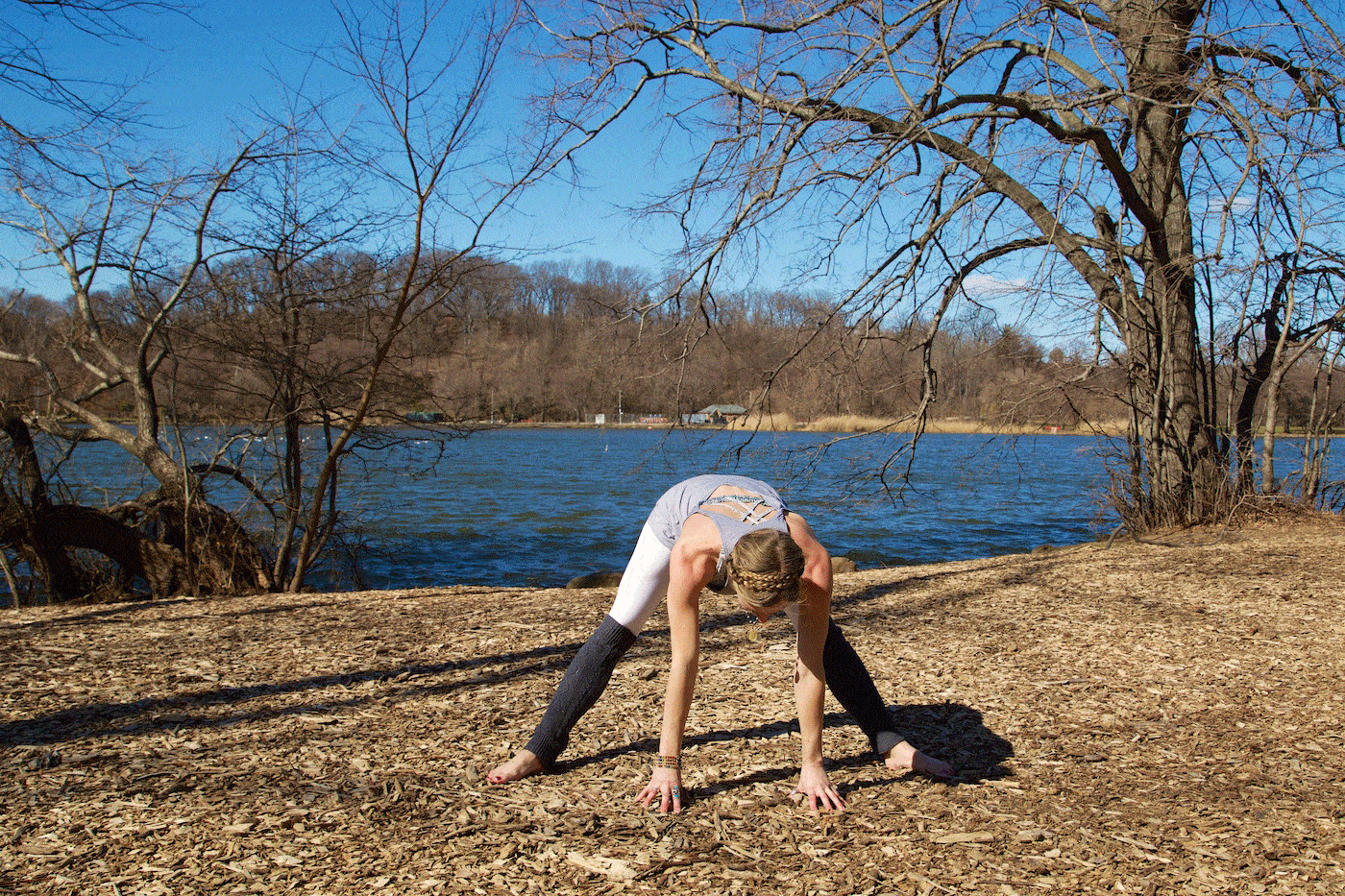
The key to achieving harmony within this movement is striking a balance between effort and effortlessness. Maintaining the same wide stance and straight legs, bring the hands to the hips and then hinge forward at the waist, releasing fingertips to the earth with straight arms. Inhale, lengthening out of the waist and extending the crown of the head forward, then exhale to lower the torso forward and surrender. Breathe deeply here, and then walk the hands toward the left, sinking into the left hip to sit down on the left heel, with the ball of the left foot lifted. The right leg stays straight meanwhile, except the toes flex upward to the sky (by now the heel may have slid further out toward the right). Optional, reach the right arm overhead, entering the full side lunge, Scandasana. Allow for an energetic exchange between your fingers and the proverbial fertile soil, using each inhalation to create more length; each exhale to establish more release and grounding. On an exhale, release the left fingertips back to the earth and straighten both legs, returning to a wide-legged stance and a long spine.
Pyramid Pose „Pumps“ (Parsvottanasana)
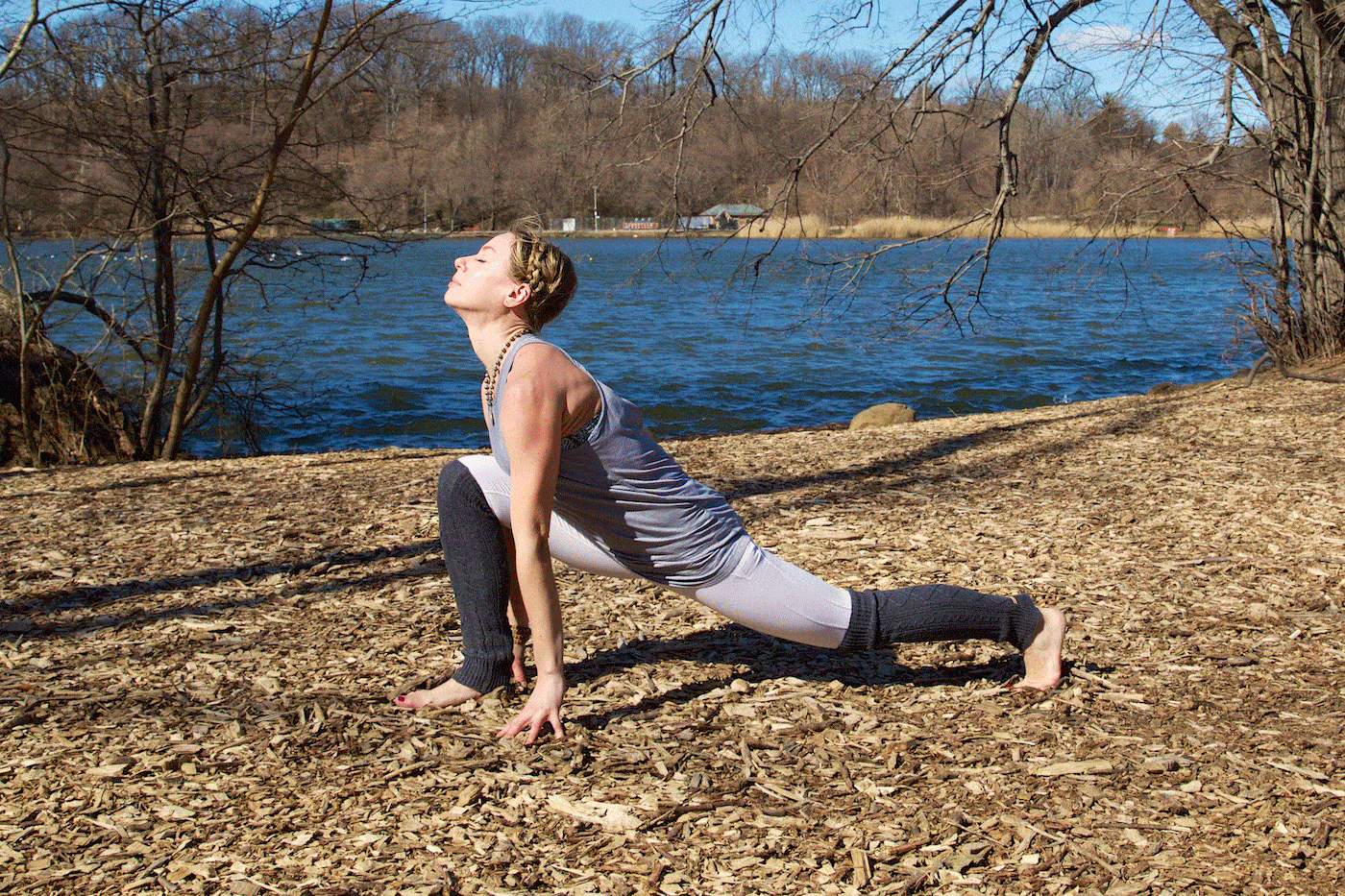
From a wide-legged stance, walk the hands all the way around to the right to frame the right foot and keep the back heel lifted to allow for more freedom to roam. Inhale to let the hips drop and bend through the right knee, lifting the chest and gaze toward the sky, then exhale to straighten through both legs. Again, inhale to bend the front knee; exhale to straighten both legs and fold forward and in, letting the head be heavy and neck relaxed. Repeat up to four times to explore a deep releasing sensation of the outer right hip and a gentle lengthening of the front of the left thigh (the psoas).
Forward Fold with Half Lifts (Uttanasana)
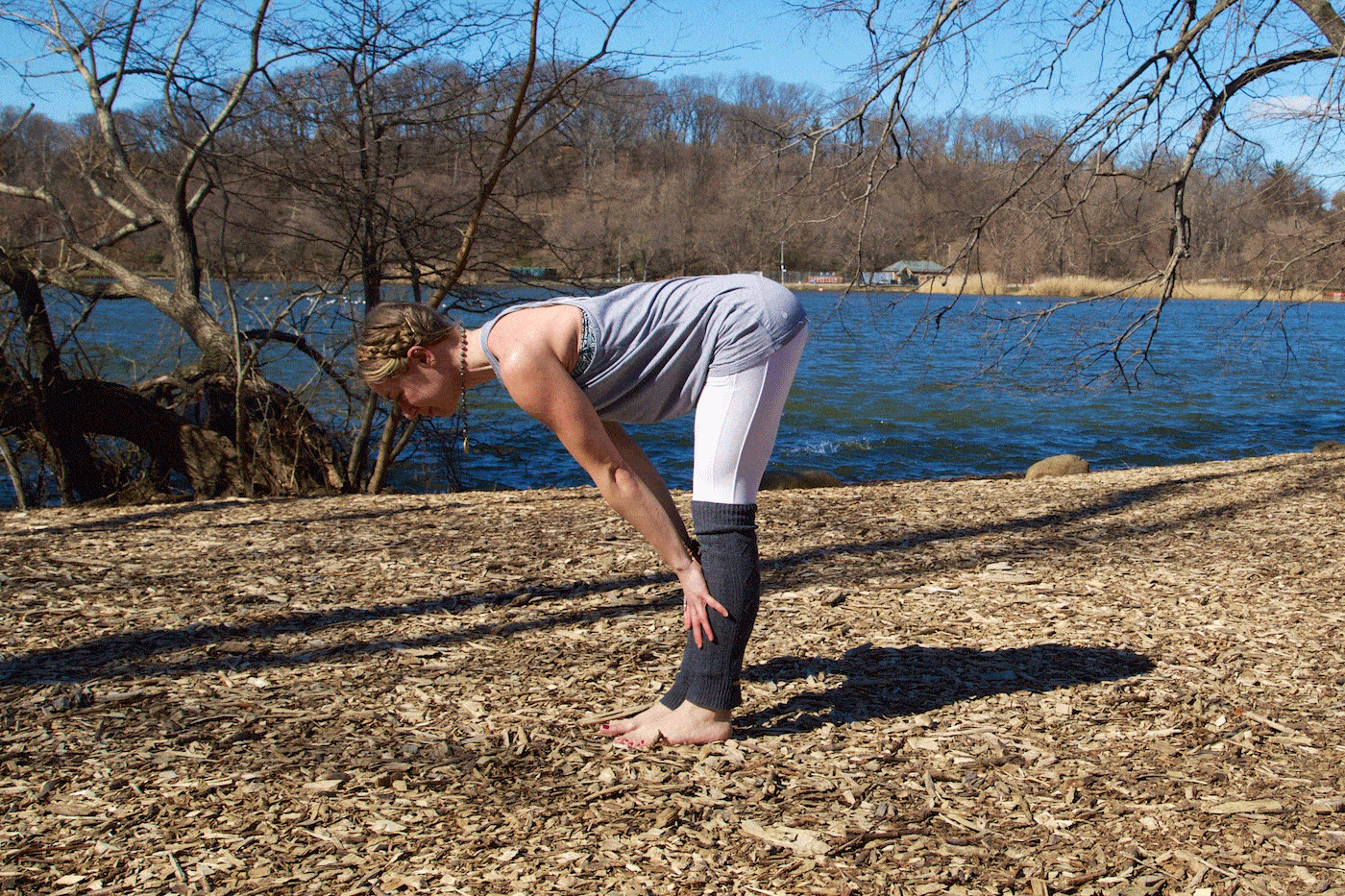
To complete the sequence on this side, step the back foot up to meet the right and inhale to look forward with a long spine. Exhale to bow forward and in, keeping enough bend in the knees to allow for a hinging of the waist, mindful the back is not overly rounding. Allow the head to be heavy and neck released, achieving minimal effort. Repeat up to four times, before placing the hands on the hips. Inhale, leading with the heart to return to a standing posture. Reestablishing a foundation back in Mountain Pose, it is now time to repeat these movements on the other side of the body.
Photos courtesy of Beth Kessler Photography
—
 Andrea Rice is a writer, yoga and meditation teacher, and Wanderlust Festival presenter. Her articles and essays have appeared in The New York Times, Yoga Journal, The Wanderlust Journal, NY Yoga + Life, mindbodygreen, and SONIMA, among other publications. She has been teaching yoga since 2010, first in Brooklyn and Manhattan, and now in Raleigh, NC, where she currently resides. She is also co-authoring a book about the application of seasonal rhythms and yoga philosophy to modern life, which will be published by New Harbinger in early 2020. Connect with Andrea on Facebook, Instagram, and Twitter, and sign up for her quarterly newsletters on her website: www.andreariceyoga.com.
Andrea Rice is a writer, yoga and meditation teacher, and Wanderlust Festival presenter. Her articles and essays have appeared in The New York Times, Yoga Journal, The Wanderlust Journal, NY Yoga + Life, mindbodygreen, and SONIMA, among other publications. She has been teaching yoga since 2010, first in Brooklyn and Manhattan, and now in Raleigh, NC, where she currently resides. She is also co-authoring a book about the application of seasonal rhythms and yoga philosophy to modern life, which will be published by New Harbinger in early 2020. Connect with Andrea on Facebook, Instagram, and Twitter, and sign up for her quarterly newsletters on her website: www.andreariceyoga.com.